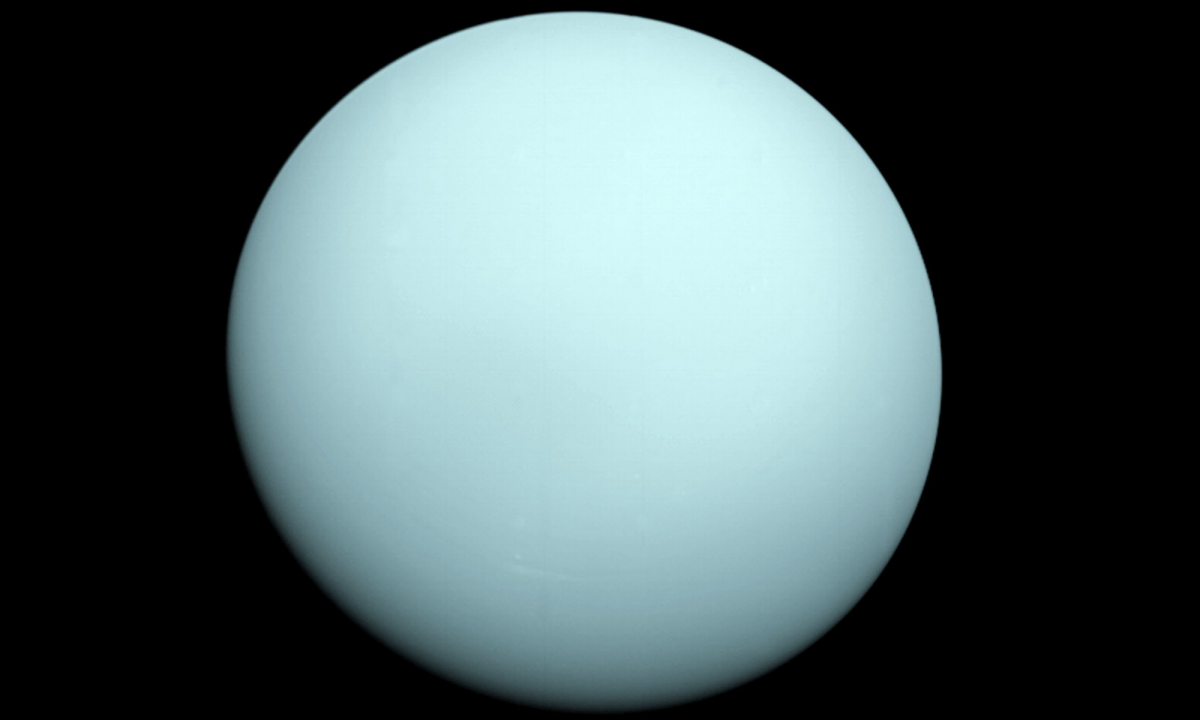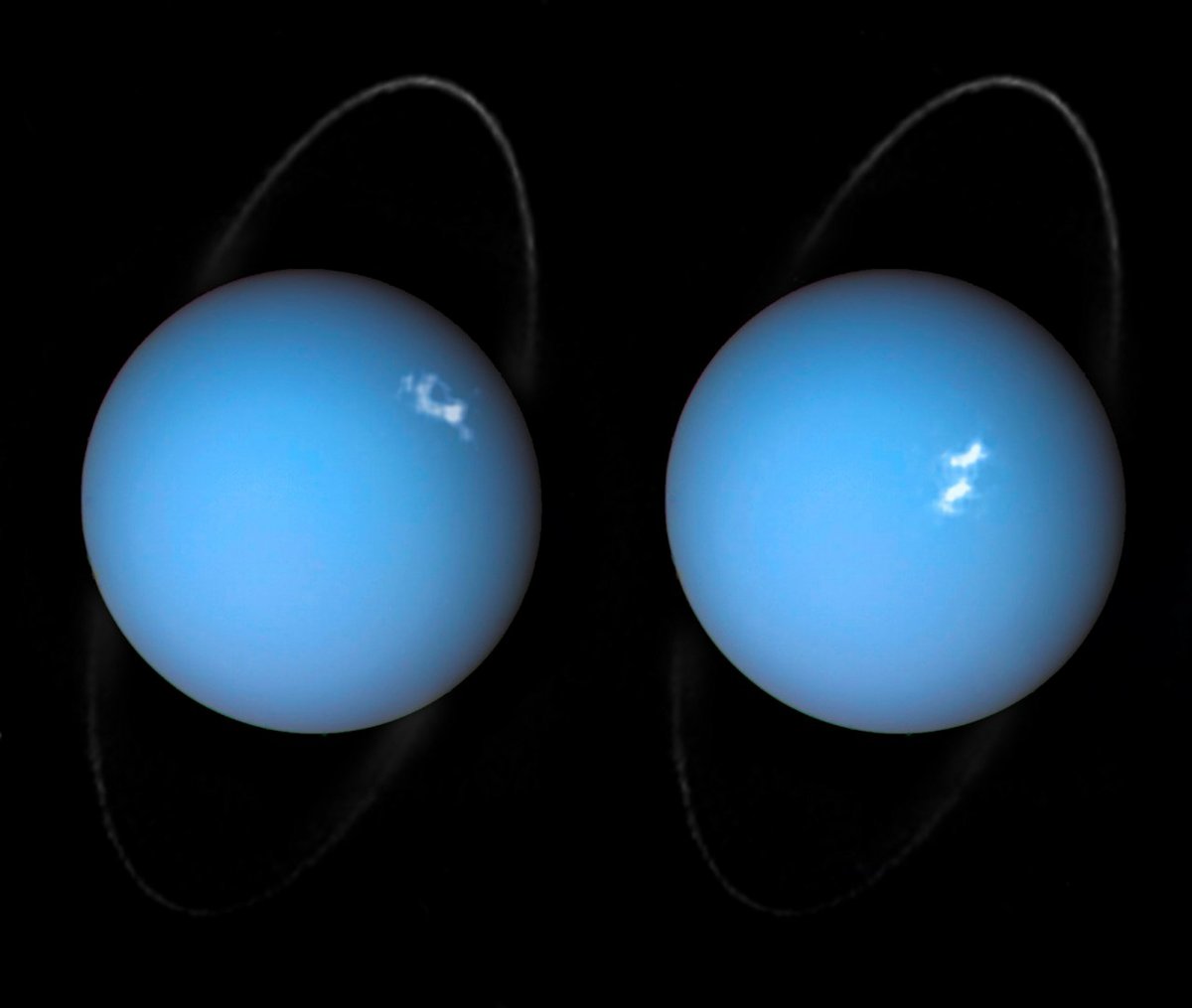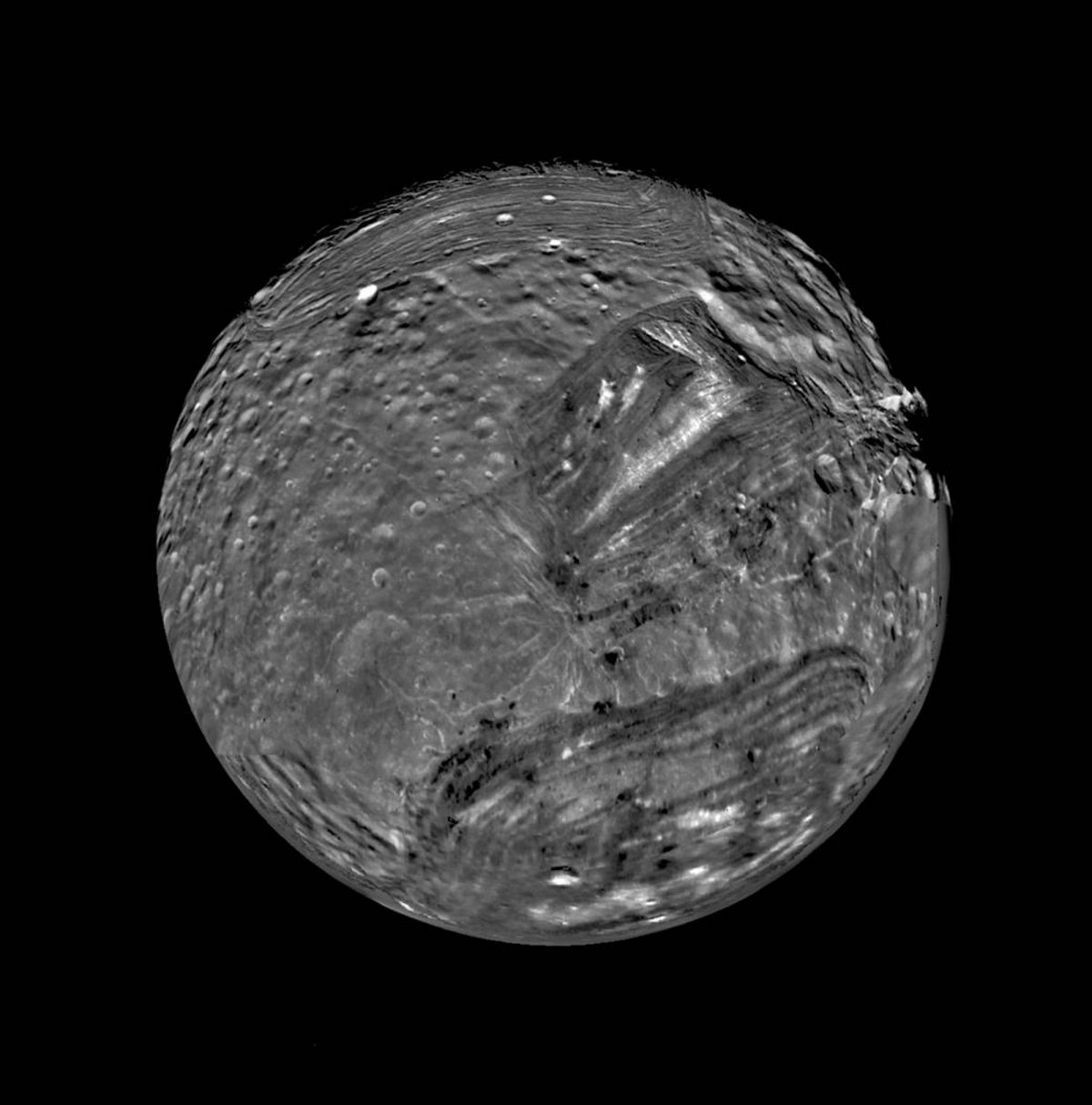A panel of planetary scientists has determined that Uranus should be a focus for future exploration by NASA. Should the recommendation go ahead, the agency could launch a $4.2 billion orbiter and atmospheric probe to the ice giant as soon as the early 2030s.
The purpose of the mission would be to perform the first up close and personal investigation of the seventh planet from the sun since the Voyager 2 probe skimmed the planet in 1986. The aim is to understand the formation and composition of this ice giant.
Among the questions that researchers will be attempting to answer about Uranus is what makes it surprisingly cold in comparison to other planets. NASA may also decide to pay close attention to some of Uranus' currently known 27 moons, ten of which were discovered by Voyager 2 in mid-1980s.
Ravit Helled, Israeli planetary scientist from the University of Zürich, who contributed to the report told Newsweek: "It is clearly important to study this planetary class not only to better understand our solar system but also because planets with Uranus-mass/size are found to be very common in the galaxy."
"Uranus represents a unique planetary type that is different from the terrestrial planets and the gas giant planets.
"There are still many open key questions regarding the nature of Uranus, including its formation process, its evolutionary path, and its composition and internal structure. . Overall, we have more questions than answers and the only way to improve our knowledge is to collect more data and have a dedicated mission."
With scientists looking to the unanswered questions, here are some things about Uranus we do know.
What Gives Uranus Its Color?
The atmosphere of Uranus is responsible for the planet's distinctive blue-green color. According to NASA, methane gas in the ice giant's atmospheric envelope traps red light from the sun while allowing bluer light to pass to the planet's surface and reflect back into space.
The ice giant formed around 4.6 billion years ago along with the rest of the planets in the solar system, with NASA suggesting that like its neighboring ice giant Neptune it formed close to the sun and eventually moved further out.

One thing that a future NASA mission to Uranus won't be doing is touching down on its surface. As an ice giant, Uranus lacks a true surface, with most of its mass made up of a hot dense fluid of "icy" materials such as water, methane, and ammonia surrounding a diminutive rocky core. In proximity to this small core, Uranus reaches temperatures of up to 9,000 degrees Fahrenheit.
Despite being larger in diameter than Neptune, Uranus is smaller in mass. This makes it the solar system's second least dense planet after the gas giant Saturn.
Any NASA craft will also have a tough time flying through the planet's atmosphere as extreme pressures and temperatures would likely destroy any spacecraft attempting such a journey.
In the atmosphere, mostly made up of hydrogen and helium with a small amount of methane and traces of water and ammonia, NASA says that wind speeds can reach as high as 560 miles per hour.
This isn't the only extreme thing about Uranus, however.
What Is Special About Uranus' Orbit?
The ice giant, which lurks 1.8 billion miles from the sun, has an extremely tilted orbit which results in its equator pointing at almost a right angle. This could be the result of a collision with an Earth-sized object in the planet's distant history.
The only planet with such an extremely tilted orbit in the solar system, Uranus which takes 84 Earth years to loop the sun, also has the most extreme seasons seen anywhere in the solar system.
During a quarter of each Uranian year, the sun is directly over each pole of the planet, which causes the other half of the planet to experience a perpetually dark winter that lasts almost 7,672 Earth days.
In addition to Venus, Uranus is also one of only two planets in the solar system that rotates from east to west, taking around 17 hours to fully rotate.
Also usually titled is Uranus' magnetic field which also possesses an irregular shape. Most planets have magnetic fields are aligned with their rotation, but Uranus has a magnetic field tilted at almost 60 degrees from its axis of rotation.

In addition to this, the magnetic field is also offset from the center of the ice giant by one-third of its radius. As a result of this, the auroras of Uranus are not aligned with the poles of the planet as the northern and southern lights are here on Earth.
Almost as remarkable as the planet itself are the moons of Uranus.
How Many Moons Does Uranus Have?
Currently, Neptune possesses 27 known moons, many of which were not discovered until relatively recently.
These moons differ from those of other solar system planets as rather than being named after mythical beings, they take their monikers from the characters of William Shakespeare and Alexander Pope.
The largest of Uranus' moons, Oberon and Titania, were the first to be discovered. They were spotted by William Herschel in 1787.
Oberon is the outermost of the ice giant's five major moons and is old and heavily cratered, showing few signs of internal activity. One mystery surrounding Oberon that NASA may seek to investigate is the nature of the unidentified dark material appearing on the floors of many of its craters.
The next two moons of Uranus, Ariel and Umbriel, were discovered by English astronomer William Lassell between 1851 and 1852. These two moons couldn't be more different in terms of appearance. Ariel possesses a bright and young surface with few craters while Umbriel is ancient, and the darkest of Uranus' five large moons. This older moon is covered with many large craters and hosts a mysterious bright ring on one side.

Almost a century would pass before the discovery of more moons around Uranus, with Dutch astronomer and planetary scientist, Gerard Kuiper, locating Miranda in 1948. Following that it would take until 1986 and the visit of Voyager to reveal more Unranian natural satellites.
This would be worth the wait, however, with the NASA craft tripling the number of known moons around Uranus finding Juliet, Puck, Cordelia, Ophelia, Bianca, Desdemona, Portia, Rosalind, Cressida, and Belinda. Astronomers would go on to follow this with the discovery of the remaining tiny and dark moons with the Hubble Space Telescope.
In addition to its moons, Uranus is also orbited by two sets of rings. The inner system of nine rings is made up mostly of narrow, dark grey rings. In the outer two outer rings, the innermost band is reddish in color similar to dusty rings seen elsewhere in the solar system, while the outer ring is blue like Saturn's E ring.
The rings are named Zeta, 6, 5, 4, Alpha, Beta, Eta, Gamma, Delta, Lambda, Epsilon, Nu, and Mu with some of the larger structures surrounded by belts of fine dust.
Helled said: "It is a special system because Uranus has regular satellites that are tilted with it. More information on the planet and its moons can reveal critical information on the formation and evolution of this planetary system.
"We would like to better characterize Uranus by looking at different aspects together that eventually will allow us to have a more complete view of the planet. It will not only teach us about the conditions in the solar nebula from which the solar system formed but will also reflect on our understanding of the many exo-planetary systems consisting of Uranus-like planets."
The article has been updated to include comments from Ravit Helled.
Uncommon Knowledge
Newsweek is committed to challenging conventional wisdom and finding connections in the search for common ground.
Newsweek is committed to challenging conventional wisdom and finding connections in the search for common ground.
About the writer
To read how Newsweek uses AI as a newsroom tool, Click here.








